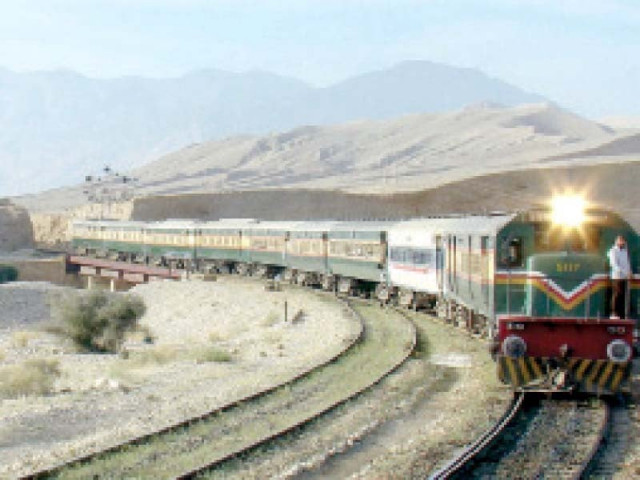China asked to remove CPEC snags
SAPM seeks Beijing’s support for completing energy, infrastructure schemes

Pakistan has requested China to remove obstacles in the way of completion of seven energy and infrastructure projects worth roughly $12 billion, Special Assistant to Prime Minister on China-Pakistan Economic Corridor (CPEC) Affairs Khalid Mansoor said on Tuesday.
“I have written two separate letters to the vice Chairman of National Development and Reforms Commission (NDRC) of China, urging him to remove barriers” hindering the completion of these projects, Mansoor said while talking to a group of journalists.
He said that the vice chairman’s support had been sought for six energy schemes and one infrastructure project – Mainline-I (ML-I) of Pakistan Railways. The cost of energy projects is $5 billion and the minimum estimated value of the ML-I scheme is $6.8 billion.
“We have requested China that the agreed projects should be taken to the development stage,” said Mansoor.
He highlighted that Pakistan was also trying to resolve problems present on its side by working on issues that were creating hurdles and the country was showing flexibility on the $6 billion loan terms that it wanted to secure from China for construction of the rail project.
For the past over three years, the Pakistan Tehreek-e-Insaf (PTI) government has been struggling to prove that it has not slowed down work on CPEC, as the progress on the ground did not move at the pace agreed between the two nations.
To a question about the timing to finalise the loan deal with China for the ML-I project, Mansoor said that Pakistan was waiting for a term sheet from China for finalisation of the loan agreement.
Pakistan would show flexibility on the interest rate, foreign currency component of the loan and tenor of the loan, he added. Pakistan had earlier requested for a loan at 1% in US dollar but “now we are willing to secure the loan at an interest rate of around 2% in an equal mix of Chinese and US currency,” said Mansoor.
The government had approved the 1,733km-long Karachi-Peshawar ML-I project at a cost of $6.8 billion, which Mansoor said the Chinese termed on the lower side. “We have offered China to arrange an all-Chinese competitive bidding for the ML-I project and if bids are higher than $6.8 billion, then the government stands ready to revise PC-I of the project,” said the PM aide.
He said that the military has assured the provision of complete security to the project.
“We are also trying to save Gwadar power plant, Karot power plant, Kohala power plant and three other projects from the adverse impact of delay in power purchase payments to the Chinese sponsors,” said Mansoor.
The ML-I project is already facing a delay of over four years and the two sides have been discussing financing terms for the past two years.
“They (Chinese) are seeking sureties that these new power plants are also not stuck in circular debt,” he added.
He said that the government was actively working to clear Rs250 billion payments of Chinese firms on account of power purchase that were stuck in the circular debt.
The government is paying Kibor plus 2% cost to the sponsors of Chinese power plants on the amount that is delayed beyond a certain period.
“The good thing is that China has not yet called the guarantees, which shows it is still willing to work in Pakistan,” said Mansoor.
While giving a background to the CPEC agreement between Pakistan and China, Mansoor said that the deals were the need of the hour.
“The CPEC is a quid-pro-co. Pakistan went to China to seek help to remove road and infrastructure bottlenecks and in return, China demanded road access to connect its western parts with the Gwadar port”, said Mansoor. Expensive electricity is better than no electricity was the slogan at that time and the country was sustaining losses equal to 2.25% of the GDP, said the PM’s aide.
The Chinese side initially laughed at Pakistan’s plan to end load shedding through Gaddani power park and establishment of coal fired power plants. China then gave an alternate strategy and, one by one, dropped the Gaddani power park and two Punjab-based coal-fired power plants ie Rahim Yar Khan power plant and Muzafargar power plant, he explained.
Irrespective of what people say about infrastructure, the lives of the residents have become comfortable due to the mass transportation projects, said the PM’s aide who also handled $5 billion Chinese investment in his previous position as head of a power company.
The $53 billion investment had been envisaged under the CPEC and “Pakistan has fairly dealt the phase-I of the CPEC”, said the PM’s aide.
So far, 5,300 MW of new electricity generation capacity has been added and an 880 kilometer long transmission line has been laid. Power projects possessing a capacity of 3,500 MW were still under implementation. Another 4,144 MW capacity projects were at the planning stage, he added.
It is Pakistan’s last chance to industrialise and the key is the development of Special Economic Zones (SEZs) under the CPEC, said Mansoor.
Under the CPEC, nine Special Economic Zones (SEZs) and a free zone at Gwadar have been planned and four SEZs and the free zone are being developed on priority, he added.
Published in The Express Tribune, November 10th, 2021.
Like Business on Facebook, follow @TribuneBiz on Twitter to stay informed and join in the conversation.



















COMMENTS
Comments are moderated and generally will be posted if they are on-topic and not abusive.
For more information, please see our Comments FAQ